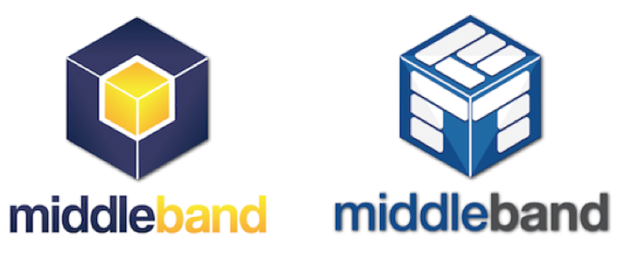I had decided to update the branding at one of my companies, and that meant re-thinking my logo.
Here’s the old logo:

The creative exercise started with a logo design contest posting at 99designs, an online marketplace for crowdsourced graphic design.
When it was all done, I had been enveloped by an epic wave of 200 designs from 38 different designers.
It was a flash mob, a virtual meetup constructed for the express purpose of creating a new logo. The system itself was relatively lean, providing just enough “framing” to facilitate rapid iteration, where lots of derivative ideas could be presented, shaped and then re-shaped again.
The bottom line is that based on the primary goal of designing a new logo, I can say without hesitation that the model works.
Not only did the end product manifest as I hoped it would (see below), but the goodness of real-time engagement was intensely stimulating and richly illuminating. At one point, I was maintaining 10 separate conversations with designers spread across the Americas, Asia and Europe. Talk about parallelizing the creative process.
In the end, the project yielded eight worthy logo designs and not one but two contest winners! It was the creative equivalent of a Chakra experience: cathartic, artistic and outcome-driven at the same time.
Co-creation, crowdsourcing and the Maker movement
Part of my draw to try out this crowdsourced model is that I consider myself a Maker and am a serious devotee of co-creation types of projects, where the line between creator, consumer, customer and service provider is inherently gray.
Why do I like this model? Because it facilitates a rich exchange of ideas and skill sets, and is highly collaborative. It’s part of the larger trend of melding of online, offline, events and exchanges into new types of value chains.
It’s a bucket that includes Kickstarter (funding platform for creative projects), Foo Camp (the wiki of conferences), Maker Faire (festival and celebration of the Maker movement) and X PRIZE (radical breakthroughs through contests), to name a few.
Plus, there’s an authenticity to that which is grass roots — that which opens a new economic domain for direct-to-consumer connections, a new modality for handcrafted, and customized offerings, even more so in a world that is tuned for mass-production.
One only has to scan the project listings at Kickstarter or the exhibitor lists at Maker Faire to see the catalytic role this wave is playing for robot makers, artisan bakers, knitted goods purveyors, sculptors, app makers, device builders and do-it-yourself kit creators. In times of stagnant economic growth, it is heartening to see how much leverage there is when you can integrate discovery, engagement, personalization and monetization, as this model does.
It’s the yin to the yang of homogenization, and as such, has promise to ignite real, durable growth across many different market segments in the years ahead.
The good, bad and ugly of crowdsourced design
With crowdsourced design, I experienced two primary pitfalls and one indirect one.
The two primary ones were:
- You run the risk that a designer is modifying someone else’s design. In fact, one of the designers of the 38 who submitted designs got kicked out of the competition for just that reason (i.e., non-original work).
- Since it’s an all-or-nothing outcome for the participants, some of the designers will diss each other, which led one designer to pull a design that I actually liked.
The indirect pitfall was the cost dynamic. Namely, given the low cost, a lot of the designers are outside the U.S., which means you could be losing out on senior, higher-dollar U.S. designers, unless you materially up the award that you want to commit to (99designs gives you tools so you can guarantee winners, increase award levels, etc.).
That stated, it’s the 80/20 rule in action: 80% of the designs that captivated me the most came from 20% of the designers. Because of the competitive nature of the format, the back-and-forth process was highly iterative.
Choosing a logo (or two …)
Meanwhile, as we got to the last hours of my logo design project, I faced a dilemma.
When I got down to the final 4-5 candidates, there were two designs that really got under my skin, each from a different designer.
Plus, as Middleband is my “umbrella” company through which a bunch of my different ventures get seeded (before being spun off as separate entities), I could see a scenario where having a second logo path in hand would be a great option to have.
Now, the cool thing about a model like 99designs is that I could affordably acquire two designs (the cost was an incremental $245 to award a second contest winner), and it was push-button easy for all parties.
So that’s what I did. Here are the two winners:

Related:
